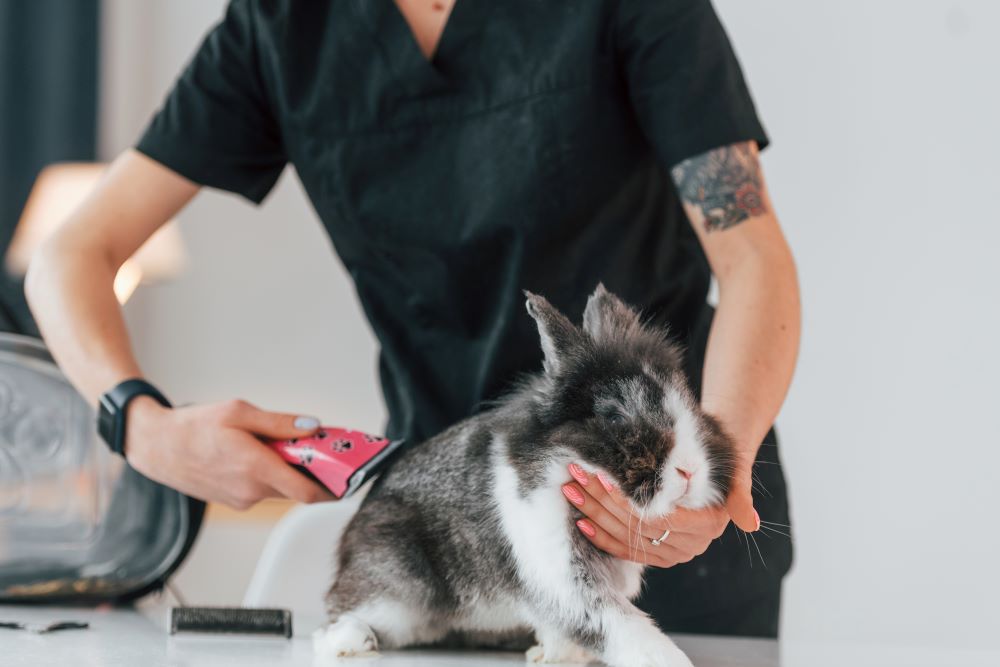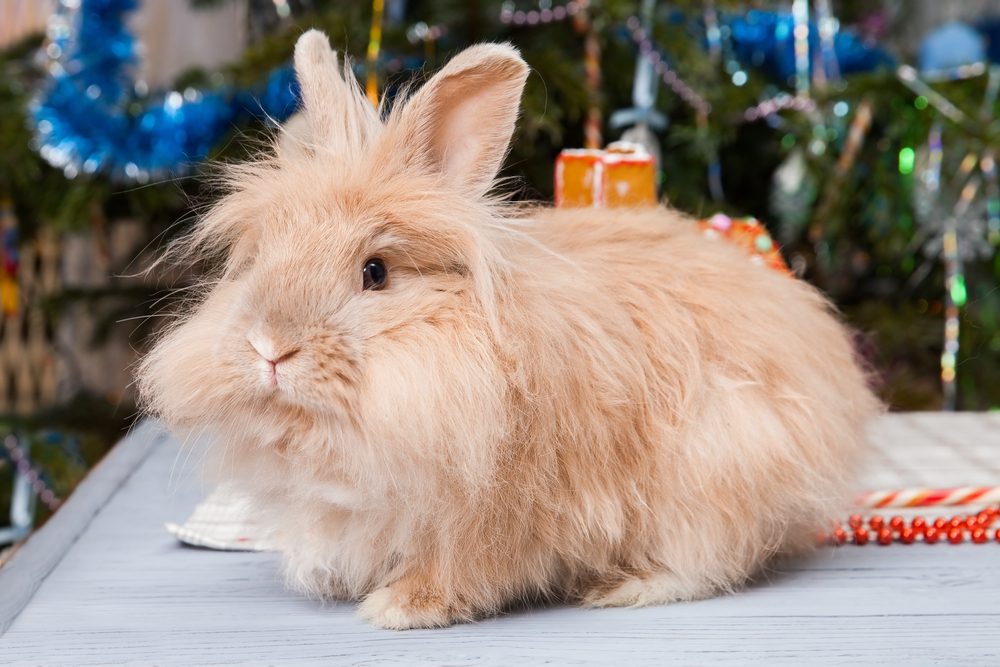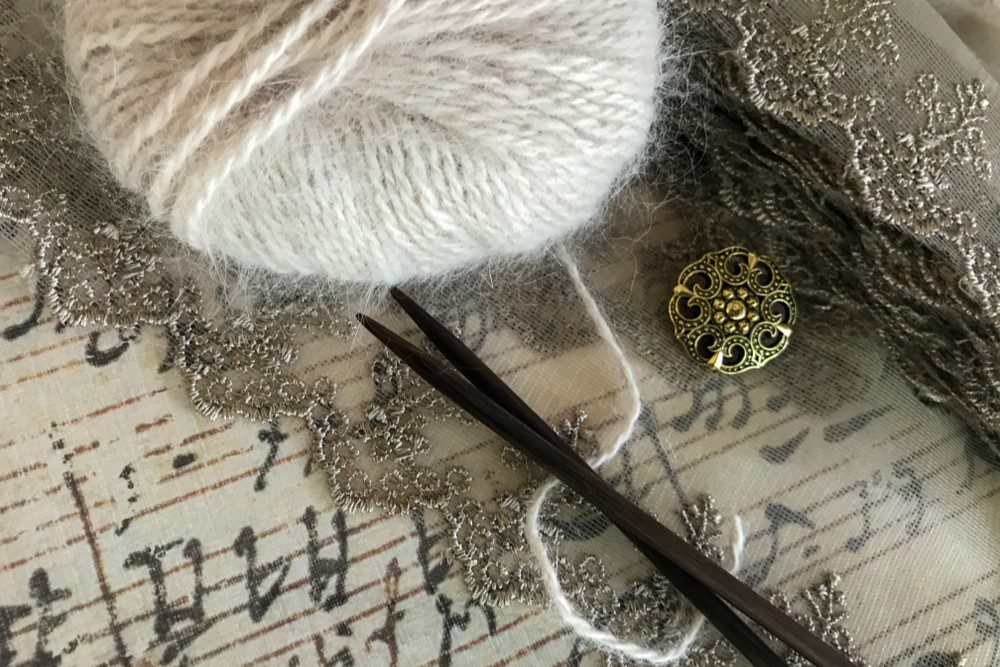Raising Angora Rabbits for Wool: The Ultimate Guide
Did you know there are different types of Angora rabbits, each with a unique wool style? From the English Angora, which looks like a fluffy ball of cotton, to the Giant Angora, which is like a gentle giant with a woolly coat, these rabbits are truly fascinating. But raising Angora rabbits for wool is an art – it requires love, care, and a lot of gentle handling.
We’ll explore how these amazing rabbits are bred and cared for, how their wool is harvested to keep them happy and healthy, and the journey that wool takes to become yarn. We’ll also examine why Angora wool is so prized in fashion and how it compares to other fibers.
So, get ready to be wrapped up in Angora rabbits. By the end of this adventure, you’ll not only have learned about these beautiful creatures and their wool but also about the importance of taking care of them and the environment. Let’s hop right in!
Different Types of Angora Rabbits for Wool Production
Angora rabbits aren’t just any rabbits. They’re like the superstars of the rabbit world, known for their amazing wool. Let’s get to know these furry friends better!
The Different Types of Angora Rabbits
There are four main types of Angora rabbits, each with unique wool.
- English Angora: Picture a fluffy fur ball with big, soulful eyes. That’s the English Angora. They’re small and have wool that’s super soft and fine.
- French Angora: These are a bit bigger and have a more ‘chilled-out’ look. Their wool is thick but not as fluffy, making it easier to care for.
- German Angora: They’re the strong, silent type. It is big and sturdy, with wool that’s dense and great for spinning into yarn.
- Giant Angora: True to their name, they’re the largest. They have a majestic look with lots of wool, which is perfect for making really warm clothes.
What Makes Angora Rabbits So Special?
Angora rabbits are more than just their cute looks. Their wool is like a superpower. It’s warmer than regular rabbit fur and even sheep’s wool. Plus, it’s super light and soft. Imagine wearing a sweater that feels like a warm hug – that’s what Angora wool gives you.
How Angora Wool Compares to Other Fibers
When you touch Angora wool, it’s like touching a cloud. It’s much softer and fluffier than wool from sheep. Also, it’s warmer, so sweaters made from Angora wool are perfect for cold days. And for people who get itchy from sheep’s wool, good news – Angora wool is usually not itchy!

The Art of Raising Angora Rabbits for Wool Production
Raising Angora rabbits for their wool is like a special art. It takes more than just feeding and petting them. Let’s dive into how to take care of these fluffy friends properly!
Creating a Happy Home for Angora Rabbits
- Space to Hop: Angora rabbits need room to move around. Think of a comfortable, spacious cage or pen. It’s like their little house where they can hop, play, and rest.
- Clean and Safe: Keeping their home clean is super important. A clean home means a happy and healthy rabbit. Plus, it helps keep their wool nice and pure.
- Weather Matters: These rabbits don’t like being too hot. They prefer cool places. So, if it’s warm outside, we must ensure they stay cool and comfy.
Food for Thought: A Healthy Diet
Angora rabbits love to eat! Their diet should be:
- Lots of Hay: This is like their favorite snack. It keeps their digestion healthy and helps them chew properly.
- Fresh Veggies: Just like us, they need their greens. Vegetables keep them healthy and happy.
- Clean Water Always: Fresh water is a must. Changing their water daily is important to keep them hydrated and healthy.
Keeping Angora Rabbits Healthy and Woolly
- Regular Check-ups: Like you visit the doctor, Angora rabbits must see a vet regularly. This helps catch any health issues early.
- Grooming is Key: Their wool can get tangled and dirty. Regular brushing keeps their wool smooth and clean. Think of it as their spa day!
- Loving Care: Lastly, they need lots of love and gentle handling. Happy rabbits mean better quality wool.
Harvesting Angora Wool: A Gentle and Sustainable Process
Getting wool from Angora rabbits is a unique process. Doing it gently is important to keep the rabbits happy and healthy. Let’s look at how we gather this excellent wool.
Shearing vs. Plucking: How to Collect Angora Wool
- Shearing: This is like giving the rabbits a haircut. We use scissors or clippers to trim their wool. It’s done carefully so the rabbits are comfortable.
- Plucking: Sometimes, we gently pluck the wool. This is only done when their wool naturally starts to shed. It’s like helping them out when they get rid of old fur.
Keeping Rabbits Happy During Wool Harvest
- Gentle Handling: We always handle the rabbits gently. This keeps them calm during shearing or plucking.
- Regular Breaks: Just like us, rabbits need breaks. We give them time to rest and hop around between shearing sessions.
- Cuddles and Treats: A little love goes a long way. After their wool is collected, we give them treats and cuddles. It’s like saying ‘thank you’ to them for their wool.
When to Harvest Wool: Understanding the Best Time
- Seasonal Wool Growth: Angora rabbits grow their wool differently during the year. Depending on the rabbit, we usually collect their wool every three to four months.
- Watching the Wool: We look at how much wool they’ve grown. It’s the best time to collect it when it’s long enough but before it gets tangled.
From Rabbit to Yarn: The Processing of Angora Wool
After collecting the Angora wool, it goes on a fascinating journey to become yarn. This process is both an art and a science. Let’s uncover how this transformation happens!
Cleaning and Preparing the Wool
- Washing the Wool: First, we wash the wool to remove dirt. It’s like giving it a gentle bath with soap and warm water.
- Drying: After washing, the wool needs to dry completely. We lay it out flat and let it air dry.
- Removing Tangles: Once dry, we carefully brush the wool. This makes it smooth and gets rid of any knots or tangles.
Spinning the Wool into Yarn
- Hand-spinning: This is a traditional way to make yarn. We twist the wool by hand or with a small spindle tool. It’s a bit like twisting spaghetti around a fork but much gentler.
- Machine Spinning: Sometimes, we use machines to spin the wool faster. The machine twists the wool into yarn like hand-spinning, but it can handle more wool simultaneously.
Dyeing and Finishing the Wool
- Adding Colors: If we want colored yarn, we dye the wool. This is where we can get creative with different colors.
- Final Touches: The last step is to prepare the yarn for use. We might twist or combine it with other yarns to strengthen it.
The Qualities and Uses of Angora Wool
Angora wool is not just any wool; it’s like the superstar of the wool world. Let’s discover what makes it special and why people love using it in fashion and home textiles.
Unique Properties of Angora Wool
- Super Soft and Fluffy: Angora wool is like a cloud in your hands. It’s much softer than most other wools, making it a favorite for anyone who loves a gentle touch.
- Incredibly Warm: Despite being lightweight, Angora wool is super warm. It’s like wearing a cozy blanket on a chilly day.
- Hypoallergenic: Good news for those with sensitive skin! Angora wool is often less itchy than sheep’s wool, making it a comfy choice for everyone.
Fashion Loves Angora
Angora wool is a hit in the fashion world. Here’s why:
- Luxury Feel: Clothes made from Angora wool feel luxurious and look elegant. It’s like wearing a piece of nature’s luxury.
- Versatility: Angora wool is used in everything from sweaters and scarves to hats and gloves. Its softness and warmth make it perfect for all kinds of cozy clothing.
Angora in Home Textiles
- Blankets and Throws: Imagine snuggling under a blanket made of Angora wool. It’s the perfect companion for a cold night.
- Cushions and Rugs: Angora wool adds a touch of elegance and comfort to home decor. It’s like having a piece of cloud in your living room.
The Economic and Environmental Impact of the Angora Wool Industry
The Angora wool industry is more than just about cute rabbits and soft wool. It affects the economy and our environment, too. Let’s explore how this industry makes a difference in the world.
The Global Market for Angora Wool
- A Big Player: Angora wool is in demand all around the world. It’s like a star in the world of textiles.
- Supporting Farmers: Many farmers rely on raising Angora rabbits for their livelihood. It’s a way for them to make a living and support their families.
- Exporting Wool: Countries that produce a lot of Angora wool, like China, send it to other places. This trade is important for their economies. The United States is also among the countries from where Angora wool can be sourced.
Sustainable Practices in Angora Wool Production
- Caring for the Environment: Farmers are learning to make Angora wool production more eco-friendly. This means using less water and ensuring the rabbits are raised well for the planet.
- Animal Welfare: Taking care of the rabbits’ well-being is super important. Happy, healthy rabbits give better wool and live better lives.
The Role of Small-Scale Farmers and Artisans
- Handmade and Heartfelt: Many small farmers and artisans are involved in making Angora wool products. They put a lot of care and skill into their work.
- Keeping Traditions Alive: These small-scale producers help keep traditional methods of wool production alive. It’s like passing down a special skill from generation to generation.
Final Thoughts
Now, it’s your turn to embrace the world of Angora rabbits and their wool. Whether you’re inspired to start a knitting project, consider ethical consumer choices, or share the fascinating story of these rabbits and their wool with others, there’s a place for everyone in this story. Remember, each choice you make can support sustainable practices, animal welfare, and the artisans who bring the beauty of Angora wool into our lives.
So, as you step forward, remember the lessons of care, quality, and creativity we’ve learned. Let the soft, warm touch of Angora wool remind you of the gentle art that brings it to life, and may it inspire you to add a bit of this natural luxury to your world.







